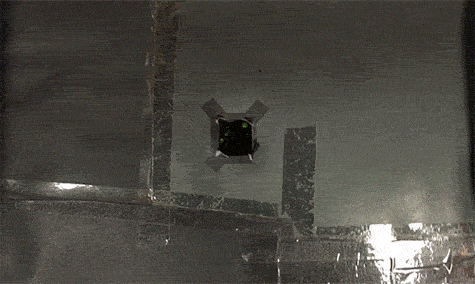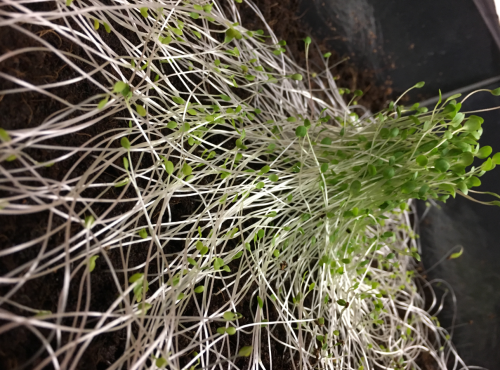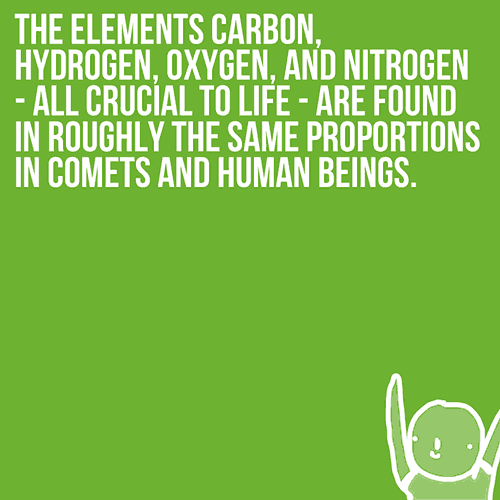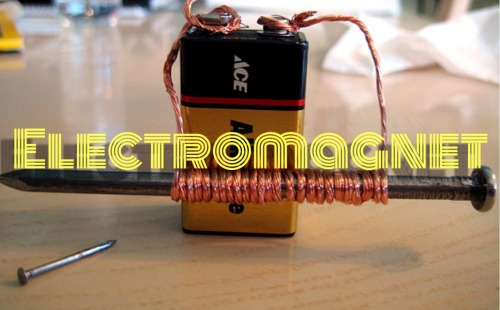Materials: 1. A Wooden Skewer 2. A Clothespin 3. 1 Cup Of Water 4. 2-3 Cups Of Sugar 5. A Tall Narrow

Materials: 1. A wooden skewer 2. A clothespin 3. 1 cup of water 4. 2-3 cups of sugar 5. A tall narrow glass
Steps: 1. First, clip the skewer into the clothespin so that it hangs down inside the glass and is 1 in from the bottom of the glass. 2. Next, remove the skewer and clothespin and put the aside. 3. Then, pour the water into a pan and boil it. 4. Next, pour ¼ cup of sugar into the boiling water and stir till it dissolves. 5. Then, keep adding more sugar, each time stirring until it dissolves. 6. Next, remove the heat and allow it to cool for 20 minutes. 7. Then, ask an adult to pour the mixture into the jar to the top. 8. Next, submerge the skewer into the glass so it is hanging straight down the miss without touching the sides. 9. Finally, put it somewhere where it would not be disturbed and wait for the sugar crystals grow over the next 3-7 days.
Lesson: When you mix water and sugar, you created a saturated mixture, which means that the water could only hold the sugar if it was very hot. As the water cools, the sugar turns into crystals on the skewer.
More Posts from Funscienceexperiments and Others


We grew some cress in box with a lid on it, that had one small hole for light. The result: a beautiful example of phototropism, plants growing and moving towards a source of light.
This is a great activity to try at home with the kids.
One Easy Way To Test Batteries
Used batteries bounce and tend to fall down when dropped. New batteries do not bounce as much and tend to stay standing.



Not all shadows are black. The Colored Shadows exhibit is a discovery of the colors hidden in white light. Red, green and blue spotlights shine on a wall. The wall is white because red, blue and green light combine to make white light. These colors are often called the additive primary colors. As you walk (or dance) between the lights and the wall, your body casts three different shadows.

This is a homopolar motor.
It’s really easy to experiment with at home. It is driven by the Lorentz force - the force which is exerted by a magnetic field on a moving electric charge. When a battery is placed on top of a magnet, and a wire then connects the top of the battery back down to the magnet, the circuit is complete.
Students in our Summer Schools were making these the other day. This one won the ‘most creative design’ competition <3

We love these Silly Science Experiments For Kids!


The elements carbon, hydrogen, oxygen, and nitrogen - all crucial to life - are found in roughly the same proportions in comets and human beings.

A magnet falling through a cylindrical hollow copper pipe. The magnets slows down in the center because as the metal falls it induces an emf in circular direction in the copper which in turn generates its own magnetic field under the action of Faraday’ law of electromagnetics but opposite in direction as determined by the Lenz’s law. This induces opposite magnetic field interacts with the magnet and tries to slow it down. Cool haa !!

Want to make a rubber egg? Your students do.
http://www.coffeecupsandcrayons.com/make-rubber-egg-science-experiment/ http://ow.ly/i/5haa2

Materials: 1. A D size battery 2. Paper clips 3. 3 feet of thin coated copper wire 4. A 3 inch large iron nail Steps: 1. First, leave 8 inches of wire at one end and wrap most of the rest of the wire on the nail ( do not overlap the wires). 2. Next, leave 8 inches of wire at the other end of the nail. 3. Then, remove an inch of the plastic coating from both ends of the wire and attach one end of the wire to one end of the battery and the other wire to the other end of the battery. 4. Finally, put the nail near the paper clips and it should pick them up! Lesson: Magnets that cannot be turned off like ones on our refrigerators are called permanent magnets. Since the magnet we made can be turned off and on, it is known as an electromagnet. They run on electricity and are only magnetic when the electricity is flowing through the wires, which has the molecules in the nail attract to the metal paper clips.
-
 colorfulcollectorpirate liked this · 3 years ago
colorfulcollectorpirate liked this · 3 years ago -
 arrows29 liked this · 4 years ago
arrows29 liked this · 4 years ago -
 licoricegiraffe reblogged this · 7 years ago
licoricegiraffe reblogged this · 7 years ago -
 funscienceexperiments reblogged this · 7 years ago
funscienceexperiments reblogged this · 7 years ago -
 funscienceexperiments reblogged this · 8 years ago
funscienceexperiments reblogged this · 8 years ago -
 girlscoutmonster-blog liked this · 9 years ago
girlscoutmonster-blog liked this · 9 years ago -
 vintage-cate liked this · 9 years ago
vintage-cate liked this · 9 years ago -
 funscienceexperiments reblogged this · 9 years ago
funscienceexperiments reblogged this · 9 years ago
Hi everyone! I'm Ashley P. and I'm a Girl Scout who wants to make a difference in the world. Currently, I've been working on my Gold Award Project, which is a project where Girl Scouts solve an issue in their community to earn the Gold Award. The Gold Award is the highest award a Girl Scout can achieve. In my project, I'm addressing the issue on how there are a lack of women in the STEM field by creating a program to do fun science experiments with younger girls. Also, I constructed this blog for parents and children to do exciting and simple experiments with their kids to spark a passion in this subject like what happened to me as a child. I hope you enjoy and try to accomplish the experiments I post! Also, please have adult supervision while completing these experiments.
210 posts